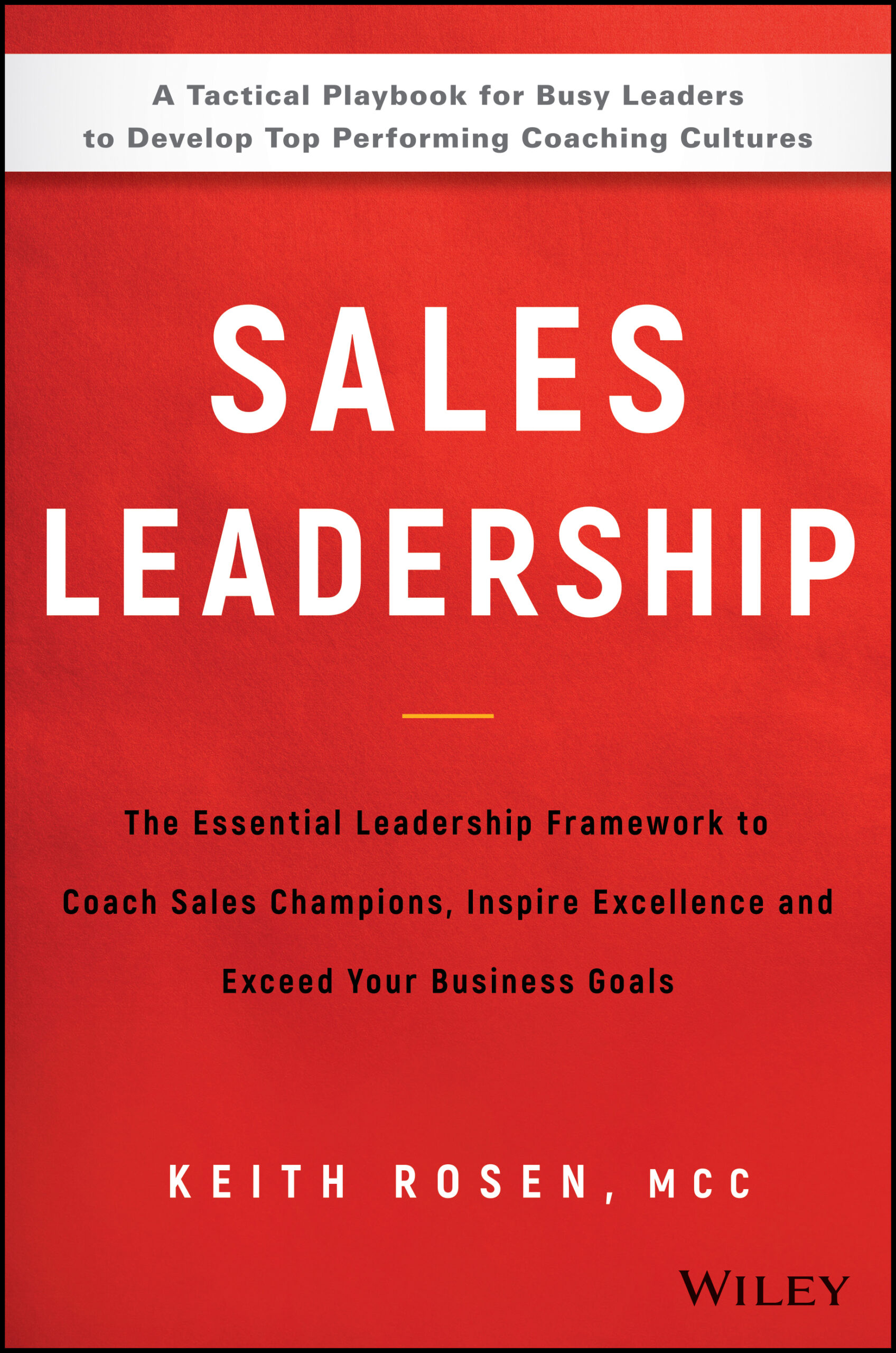Do you know what your people are doing in the field? Unless managers are in the field or on the phone actually listening to and observing what their people are doing and how they communicate with customers and prospects, managers really have no idea what their people are doing.
 Sure, you can guess and hypothesize as to why, for example, some of the salespeople on your team aren’t making quota or selling more. The majority of managers make their assessments by either looking at their reports, data and activity or by making certain assumptions based upon their own experiences. But when managers finally take the time to observe their people in the trenches, the real truth is (sometimes painfully) apparent.
Sure, you can guess and hypothesize as to why, for example, some of the salespeople on your team aren’t making quota or selling more. The majority of managers make their assessments by either looking at their reports, data and activity or by making certain assumptions based upon their own experiences. But when managers finally take the time to observe their people in the trenches, the real truth is (sometimes painfully) apparent.
Granted, managers are often left in a state of shock when they see what their salespeople are and are not doing and saying when meeting with and presenting to their prospects and customers.
However, the upside of observation is, managers now have a clear insight and valuable epiphany as to the real reasons why their people aren’t closing more sales, what their salespeople have to do to change for the best and what the manager has to provide (additional coaching, training, resources, templates and so on) in order to help facilitate these necessary changes.
What’s In It for Them? What’s In It for You?
If observation is the missing ingredient to quickly assess talent gaps in order to create a team of sales champions, then why is there such resistance around engaging in this activity? What are some of the inherent challenges managers need to overcome when looking to make the shift and truly coach and observe their sales team, especially when it comes to observing them in the field, during a joint sales call or on the job?
While managers may complain that they “don’t have the time” for observation, the real cause of their reluctance has to do with the fact that they feel observation is really hard, even confrontational and uncomfortable at times. Moreover, they either assume or have first hand experience that their direct reports simply do not want to be observed, especially their top performers. And finally, managers are just assuming what their people are doing based on results, activity or conversations with their direct reports. As such, instead of gathering the facts, they’re replacing the facts with costly assumptions.
In reality, observation is only difficult because most managers have never been shown how to first set expectations and position this conversation about observation to their direct reports in a way that they see value in it and second, how to do this correctly. The result; most managers simply don’t do it or don’t do it frequently or consistently and if they do, it’s often more toxic than helpful when forced upon or done ineffectively.
The Danger of Coaching In Your Own Image
In truth, managers are really not paying attention. When a manager is observing their people, most of the time they’re “already seeing” what they see in their mind’s eye, or what they perceive is the right way and in turn, that’s what they’re listening for. In other words, they’re seeing how that person is not modeling the way the manager would do it or the very directive and rigid way they want it done.
As a result, what the manager winds up doing is coaching in their own image, rather than uncovering and co-creating new possibilities and identifying what is best for that person in a way that would leverage their unique and individual talents and strengths; all due to the rigidity in the manager’s thinking because they are focused on their agenda.
Focus on The Solution, Not The Problem
For example, when observing one of their salespeople during a joint sales call; after the meeting is over and the manager and salesperson have left the meeting place and are back in the car or office, this is what I’ve heard managers say to that salesperson:
- “Here’s what you did wrong.”
- “Here’s what you should have done.”
- “Why didn’t you do it this way/qualify better?” Or worse:
- “Now I see why you’re not going to make quota this quarter!”
Now, this certainly does not do anything to stimulate and atmosphere of open and healthy collaboration. First, the salesperson may have just gotten beaten up by the prospect or customer they called on, then they get their second beating by their manager! Notice where these statement and questions focus on. They are problem focused statement and questions that highlight the problem or why they can’t or won’t achieve or do something.
Managers are too focused on what their people are not doing or what is not working, instead of what is working and because of this. They don’t reinforce the positive behavior want their team to continue engaging in. We all know that most managers are very adept at telling their team why they’re not good rather than reinforcing the positive behavior they observed so their direct reports know what to continue doing that’s working well!
Avoid Redundancy
If we’ve uncovered what questions and statements to avoid, what are the positive more tactical questions you can ask that would co-create a new and better outcome, while encouraging the direct to uncover their own gaps and developmental opportunities?
Managers need to provide feedback in a way that would not only be well received by your direct reports but would facilitate positive behavioral change. Now, how can you achieve this without your directs pushing back?
While counter-intuitive, managers must learn when delivering feedback to initially respond with better questions to help your direct reports first self assess what they see so they can do a self analysis without initially hearing and being tainted by your opinion and as such, develop their own problem solving skills rather than you viscerally firing off a solution. This is a critical coaching strategy because it builds greater accountability, helps you assess how self-aware they truly are and avoids running the risk of you being redundant and telling the person something that they already know and see or hearing from them, “Yeah, I already knew that.”
Effective Feedback Starts With a Self-Assessment
Instead of telling an employee what he or she did wrong, begin your feedback by asking them the following questions the next time they finished delivering a presentation, calling on a client or making a cold call in an attempt to find new qualified prospects:
- Okay, tell me how you felt that call went? What did you observe?
- How did it feel when delivering your presentation? What did you sense from your prospects/clients/audience you were delivering to?
- What did you do well?
- Where do you feel you got stuck?
- What could you have done differently?
- What do you need to improve or change in order to achieve better results the next time? (Was there anything you feel was stepped over or needed to be addressed that was not?)
- (When presenting with a team.) What else did you notice among your team? Any other observations that would help the team improve when presenting? (What they did well, what they need to improve and be mindful of the next time.)
- I want to make sure I support you the best way I can. May I share a few additional things I noticed to help you become more effective and successful? (Seek to understand first, then provide your observations that they missed to avoid redundancy. This is the value you deliver, since you’re sharing things they didn’t see which were outside of their line of vision. Now you can ask this permission based question in pure coaching form, since you now know what they observed themselves and know what they didn’t see.)
Now that you know what they know, you have also uncovered what they missed or don’t know. After all, even the world’s greatest athletes can’t self-diagnose in the middle of the game. That’s why the coach is on the sidelines, seeing the things that the players can’t see on their own. Besides, when something is always going on, we become blind to it. It’s your responsibility to uncover each of your players’ blind spots, which is, in fact the opportunity to further refine their skills and develop their talent.
After you have your direct report self-assess using the questions listed above and you’ve uncovered the Gap or the coaching moment, that is, what they didn’t see on their own, now’s the time to share what you observed, which they did not. That’s the value of observation and coaching. However, when sharing your observations, don’t share more than 1-3. Save the rest for another joint sales call or bring some of these topics to your next coaching session with them when you would have the time to do a deeper dive and coach them around developing or refining the skills they need to be more successful.
After sharing an observation or two, then continue with the following questions to confirm what they have learned and the value from this interaction, as well as what their next steps are to ensure you build momentum and accountability:
8. What is your action plan/are the changes you plan to make for the next call so that you can achieve the results you want?
9. What’s the lesson here? What did you learn from this?
What you will find is that people will be more open to collaborating on a better solution and critiquing themselves because they are responding to solution-driven questions rather than being asked problem-focused questions that put them on the defensive. Furthermore, you’ll be able to better uncover the gap and the coaching moment either in their thinking or in their strategy and approach in order to provide them with the prescriptive guidance and a more specific solution they need to fill the chasm.
Photo Credit: Catherine



